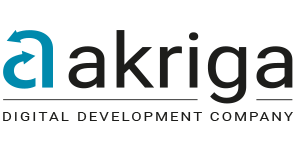Choosing a Multi-Lingual Ecommerce CMS in 2020
Choosing an ecommerce content management system (cms) is an important strategic decision. The system must meet the current and future demands of the business as much as possible. Organisations that would like to expand into multi-lingual markets will find this has a significant impact on the choice of cms. Whilst most systems can, with time, money and effort, be made multi-lingual (although the goal should be multi-territory, not just multi-lingual) some provide a better starting point than others.
Multi-lingual is not multi-territory
We’ve blogged about this before but it bears repeating. A common mistake is using language as a proxy for country. For example users that choose German could be from Austria, Germany or Switzerland. However, the legal systems in those countries are not identical. French is spoken in Belgium and Canada but there are important differences in those markets. Products that may be sold in one country may not be sold in another or messages may have to be different. You may need a different menu for certain countries. A multi-lingual ecommerce cms should makes these easy to achieve.
Its important to determine at the start of the project whether you have products/services/messages that do not apply to certain countries and make sure your proposed architecture can support that.
Content management systems (CMS)
We have direct experience of these popular systems:
Introduction to CMSes
A CMS separates data (your content, such as products) from the presentation of that data. Presentation comprises things like layout, font, and colour which are typically bundled into a component known as a “theme”. Pre-built themes can be customised to suit your look and feel or a theme can be built from scratch.
Importantly not all themes work with the ecommerce component of a given CMS, you may have less themes to choose from, especially because some ecommerce components only work with certain themes.
Shopify is a hosted service and ecommerce is built in. The other systems require hosting and additional software to provide the ecommerce functionality. High quality hosting with a firewall, high uptimes, monitoring and commercial grade backups are important for ecommerce sites because downtime means lost revenues.
WordPress – hugely popular cms but truly multi-lingual?
Woocommerce with WordPress is a very, very popular cms and ecommerce combination. WordPress has excellent support for translating your site but poor support for multi-lingual or multi-territory site. That is to say it can support multiple languages well but language switching is not easy. Its possible to use the WordPress multi-site feature to create multi-lingual ecommerce websites but multi-site does create an administrative burden.
Drupal
Drupal is a very powerful CMS but with power comes complexity. Its not as easy to use as WordPress and upgrades are more involved. However, the multi-lingual components are part of the core and you have a lot of flexibility. Drupal has WorldPay modules but these don’t appear to be well supported or mature.
Shopify
Shopify comes with its own hosting and is multi-lingual. However, not all Shopify themes come with a language selector. Shopify is something of a walled-garden, you can only choose from a relatively small number of apps to extend the core functionality. There will be less Shopify developers around to support you than with the other systems, however Shopify will take care of upgrades for you. This is option is likely to have the highest fees but you must take into account the total cost of ownership.
ModX
ModX has a smaller market share and is favoured by developers for its flexibility. However, it is quite usable for non-technical administrators. Multi-lingual websites can be built with ModX as can ecommerce sites using third party modules. The Modmore commerce module supports Stripe and SagePay but not WorldPay.
Joomla
Joomla has support for multiple languages built into its core. We have been able to build a genuinely multi-territory website (not just multi-lingual) with earlier versions of Joomla. Joomla has lots of features and lies somewhere in-between Drupal and WordPress for ease of use by administrators. The Virtuemart and J2 ecommerce extensions have commercial WorldPay plugins.
Recommended next steps
- Define languages and territories you plan to support.
- Understand the different shipping and sales tax options you need to handle.
- Decide on a payment gateway.
- Investigate fee levels with Shopify.
- Choose a multi-lingual ecommerce cms that supports multi-territory, your payment gateway, shipping and tax position. Understand the theme options that come with this choice.
- Identify a web developer that can implement your chosen CMS.
- Involve SEO experts at a relatively early stage.
Further reading

